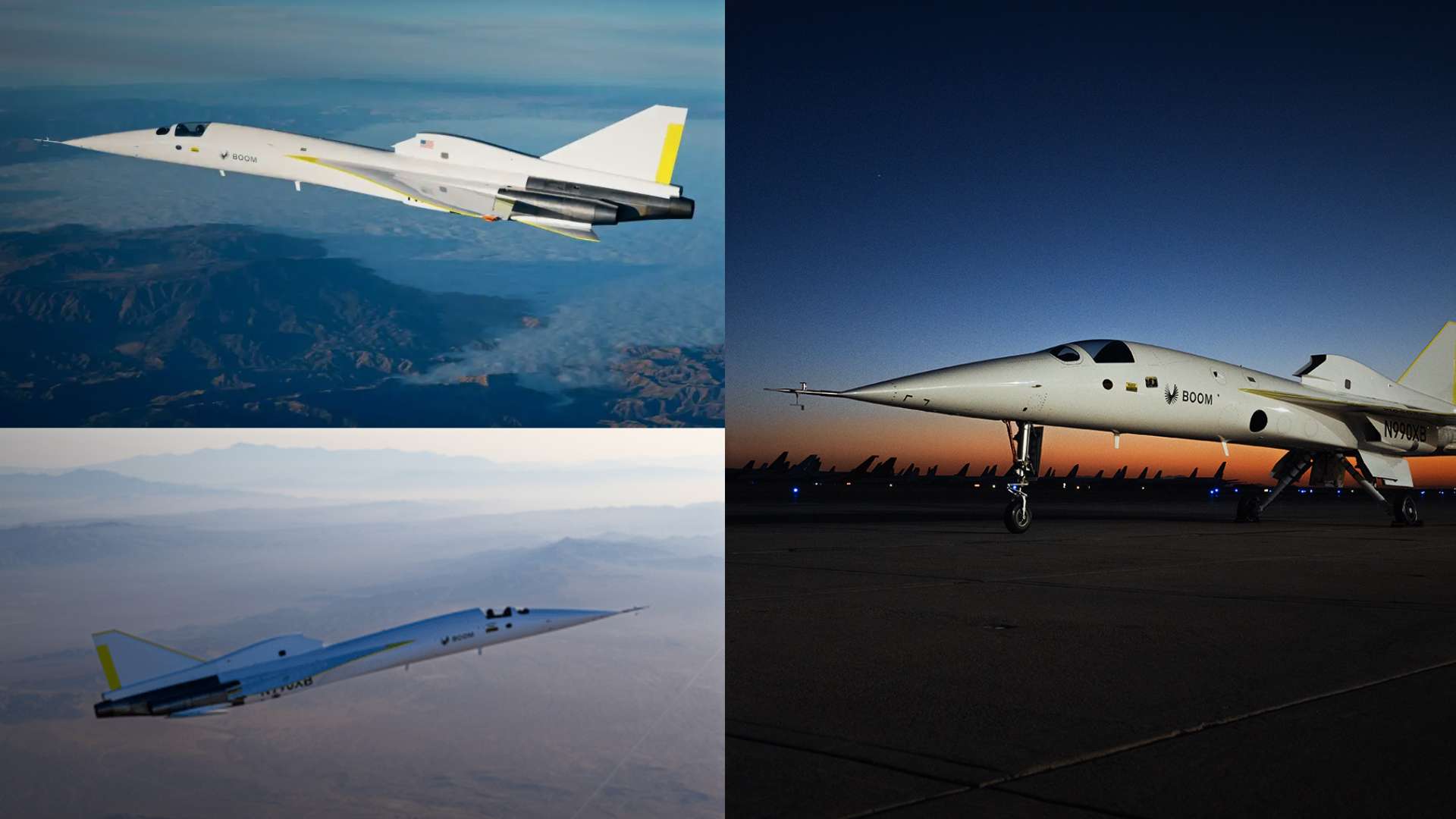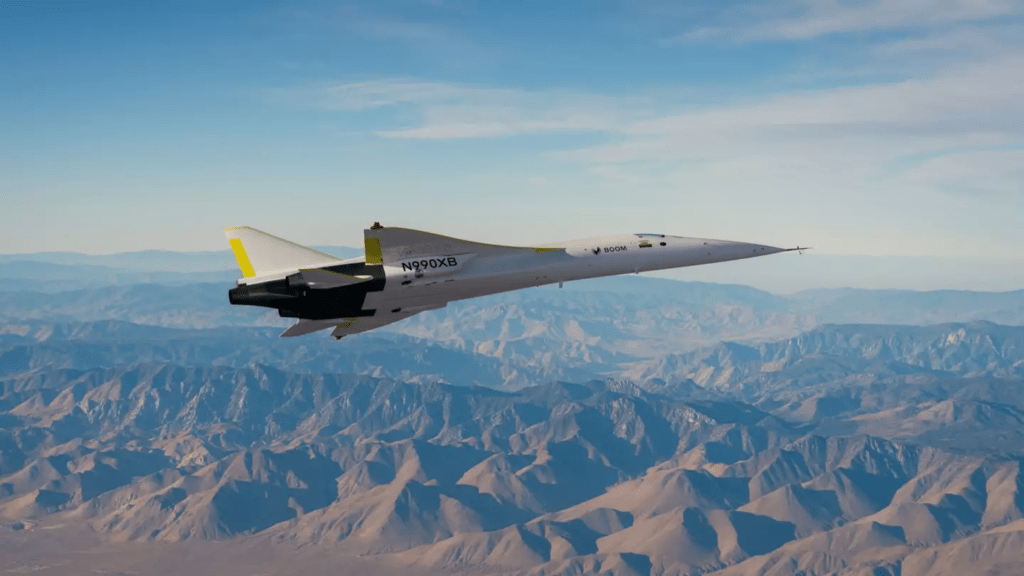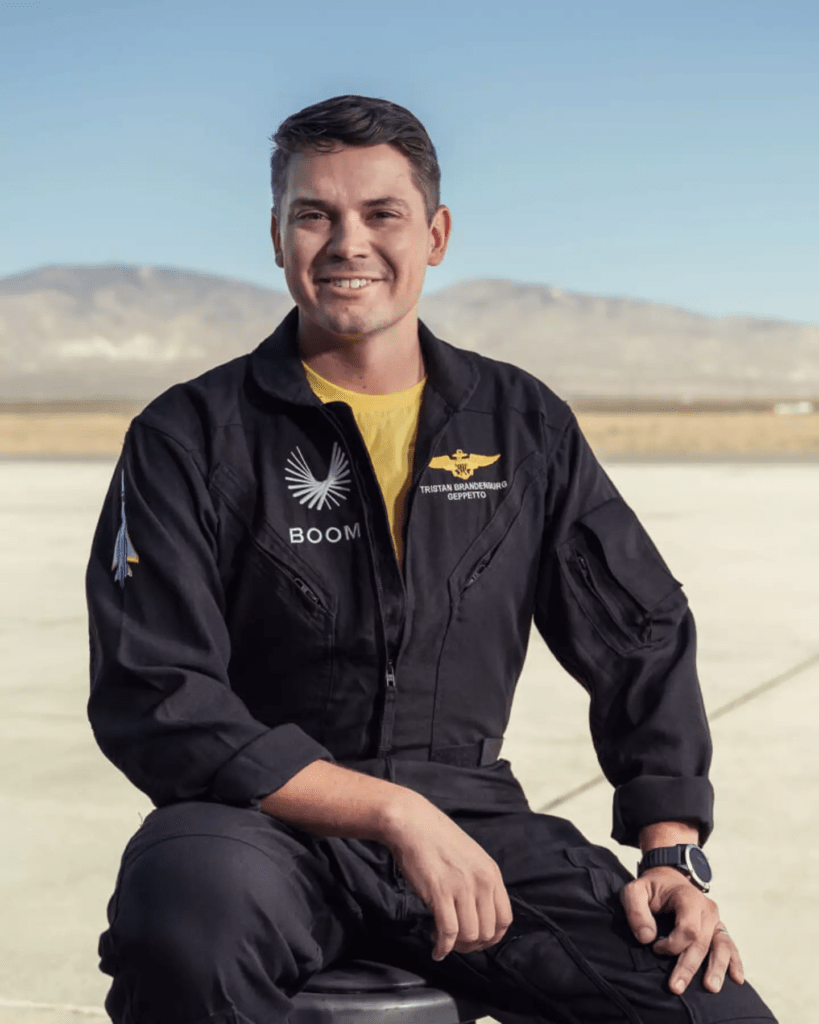Boom’s XB-1: A Step Closer to Supersonic Commercial Travel – The Son of Concorde Reaches New Heights

Supersonic Flights Might Soon Be Reality Again
In the world of aviation, a major leap has been made with Boom’s XB-1 model breaking the sound barrier for the first time on January 28, 2025. This incredible achievement marks the first step toward the revival of supersonic commercial travel. The airplane, affectionately known as the “Son of Concorde,” reached speeds of 844 mph, which is 83 mph faster than the speed of sound, during its test flight. This progress brings us one step closer to potentially crossing the Atlantic in just over 3.5 hours – a feat that was once reserved for only the Concorde, which was retired back in 2003.
The Return of Supersonic Flights: An Exciting Era for Aviation
A flight from New York to London typically requires an exhausting 8-hour journey, often forcing travelers to lose a whole day of their vacation just to sit through the flight. However, with advancements in aviation technology, this long journey may soon be a thing of the past. Thanks to Boom Supersonic and their ground breaking XB-1, we might soon be able to cut that time drastically, flying from the U.S. to the U.K. in just 3 hours and 30 minutes.
What Makes the XB-1 So Special?
The XB-1 is more than just a test aircraft – it represents the future of supersonic travel. This demonstrator model achieved an astounding 844 mph during its test flight, breaking the sound barrier and offering a glimpse of the speed and technology that could revolutionize air travel. The aircraft is part of Boom’s larger vision to develop the Overture, a supersonic airliner capable of carrying passengers at speeds faster than sound, across commercial routes.
You can check out the incredible moment when the XB-1 broke the sound barrier in this YouTube video.
Social Media Reactions: The World Is Watching
Since the XB-1’s successful test flight, social media has been buzzing with reactions and excitement. Here’s what people are saying across platforms:
- Twitter:
- @AviationFan2025: “The future of air travel is here! Boom’s XB-1 just broke the sound barrier at 844 mph. Can’t wait for supersonic flights to become a reality. ✈️💨 #Supersonic #BoomXB1”
- @TechGuruNews: “Boom’s XB-1 takes off into aviation history. A new era of travel is coming! Can you imagine flying from New York to London in under 4 hours? #AirTravelRevolution”
- Instagram:
- @JetSetLife posted: “The sky is the limit! The new supersonic Boom XB-1 has shattered expectations and broken the sound barrier. It’s official, the future of air travel is going to be FAST! 🌍✈️🔥 #XB1 #SupersonicFlight #FutureOfTravel”
- @AviationLoversUnite shared: “Imagine traveling across the ocean in a fraction of the time. Boom’s XB-1 is changing the game. Can’t wait for the Overture to take us to the skies. ✨#SupersonicTravel #BoomSupersonic”
- Facebook:
- Aviation Today shared: “Breaking news: The XB-1 aircraft from Boom Supersonic has successfully broken the sound barrier during its test flight! The dream of faster-than-sound commercial flights is becoming a reality. Let us know what you think in the comments below!”
Historic Moment: Breaking the Sound Barrier Again
The XB-1’s flight took place at an altitude of 35,000 feet, where it hit supersonic speeds, surpassing the speed of sound, which travels at 761 mph at that altitude. During the flight, the team at Boom celebrated as they watched their dream take flight. In real-time commentary, former British Airways Chief Concorde Pilot, Mike Bannister, shared his excitement:
“There we are, XB-1 is supersonic, faster than the speed of sound – we’ve got confirmation from the control room that she is supersonic.”

This historic flight is not just a major milestone for Boom, but for aviation history itself. The achievement of flying faster than sound is a feat that was first accomplished by the Bell X-1 in 1947, and now, more than 70 years later, the dream of supersonic commercial flights could become a reality again.
A Look Inside Boom: Revolutionizing Air Travel
Founded by Blake Scholl in 2014, Boom Supersonic is pushing the boundaries of aviation with the goal of creating a new class of airliner – one that can travel faster than the speed of sound, cutting down flight times significantly. The company’s focus is on efficiency, sustainability, and creating a commercial aircraft that is both environmentally friendly and affordable to operate at scale.
Scholl shared his excitement following the XB-1 test flight, stating:
“Today, XB-1 took flight in the same hallowed airspace where the Bell X-1 first broke the sound barrier in 1947. I’ve been looking forward to this flight since founding Boom in 2014, and it marks the most significant milestone yet on our path to bring supersonic travel to passengers worldwide.”
With XB-1’s successful test flight, Boom is one step closer to making its vision of commercial supersonic travel a reality. The Overture, the aircraft model Boom intends to develop, will be the next major leap forward. The Overture will have the capability to transport 65 to 88 passengers at speeds 1.7 times the speed of sound – reaching up to 1,300 mph – reducing the flight time between New York and London to just 3.5 hours.
The Pilot Behind the Mission: Tristan ‘Geppetto’ Brandenburg
Leading the test flights for Boom is Tristan ‘Geppetto’ Brandenburg, a former U.S. Navy aviator who has been with Boom since its early days. Brandenburg piloted the XB-1 during its historic supersonic flight and shared his thoughts on the plane’s performance:
“She was real happy supersonic. That’s the best she’s ever flown.”

His words underscore the exceptional engineering behind Boom’s aircraft. Brandenburg’s extensive experience in aviation has made him the perfect candidate to guide Boom through these critical milestones, and he continues to lead the way with the company’s future goals.
What This Means for the Future of Air Travel
If Boom successfully develops the Overture into a commercial airliner, it would dramatically change the way we think about air travel. No longer would passengers need to spend endless hours cramped in a seat to cross the Atlantic. Instead, we could experience a new level of convenience and speed, making travel more efficient and reducing the time spent in transit.
The Costs of Supersonic Travel: Will It Be Affordable?
As exciting as this development is, there’s a crucial question: How much will a ticket cost on a supersonic flight? If we look back to the days of the Concorde, which flew supersonic from 1976 to 2003, ticket prices were extraordinarily high. A one-way flight between New York and London could cost around $5,000, which would equate to approximately $20,000 today when adjusted for inflation.
While Boom’s Overture may offer affordable options for business and leisure travelers, it is still unclear whether it will be accessible for the average consumer. However, Boom is focused on creating a sustainable and cost-effective supersonic model, which could lead to more competitive pricing in the future.
Check out this article for an in-depth look at the potential cost structure of supersonic flights.
Conclusion: Supersonic Travel is Within Reach
The successful test flight of Boom’s XB-1 aircraft has reignited the dream of supersonic commercial air travel. With continued innovation and dedication from the team at Boom, the future of air travel could very well include flights that are faster, more efficient, and more accessible than ever before. While the price point and widespread availability of supersonic flights remain uncertain, this is a major milestone in aviation history that brings us closer to the next chapter in air travel.
As Boom moves forward with the development of the Overture, aviation enthusiasts and travelers alike are eagerly awaiting the day when we can once again soar across the sky at supersonic speeds.
What do you think about the future of supersonic travel? Do you think it will become affordable for regular passengers? Share your thoughts with us on Twitter or Facebook!
Featured Image Credit: YouTube/boomsupersonic9928 , Boom






